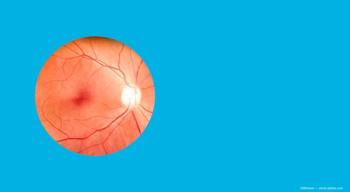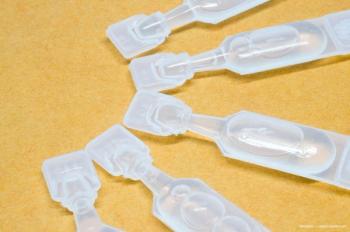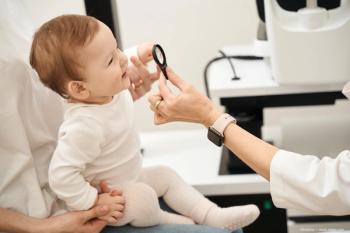
- Ophthalmology Times: April 2024
- Volume 49
- Issue 4
The evolving role of vitreosurgical simulators in surgical training
Need to eliminate errors results in optimization of training of novice surgeons.
Embarking on the journey of surgical education is a formidable task that demands a solid theoretical foundation, dedicated time, and hands-on practice. Over the centuries, we have witnessed a remarkable evolution in surgical education, transitioning from the master-apprenticeship model toward more complex, innovative, and technological educational methods.1
The traditional master-apprenticeship model for surgical training involves the gradual transmission of knowledge from master mentors to apprentices. However, the current medical scenario, characterized by a diminished tolerance for errors and pressure for clinical productivity, has led to optimization of the training of novice surgeons. Consequently, the traditional training relationship has become more challenging in today’s academic health care.2,3
Further, traditional surgical education is limited to the mentor’s field of knowledge, which promotes heterogeneity in surgical training and restriction to the specific experiences encountered during training.
In this context, simulators play an important role in the mastery of surgical skills and have emerged as a valuable avenue for novice students to master intricate and repetitive tasks, the mishandling of which in real-life scenarios could result in patient harm. Evidence from surveys underscores trainees’ favorable responses, while emerging trends emphasize the potential mandate for surgical simulation across a wide range of surgical fields.
By definition, a surgical training simulator is any device or model used to recreate real-life situations and/or teach a specific manual skill needed in the operating room. The origins of the currently available surgical simulations started from wooden bench-top models, live animals, and human cadavers.4 Recently, synthetic simulators5 and virtual reality (VR)6 platforms have become more available for use in medical training.
Ophthalmic surgery has some intrinsic peculiarities favorable to the use of simulating devices. First, it accelerates familiarity with the surgical microscope, enhancing the comprehension of stereoscopic depth perceptions and, therefore, the trainees’ confidence.7 Second, in ophthalmologic surgeries, the surgical field is small, making visualization and simultaneous action challenging for learning and limiting intraoperative maneuvers. Third, manipulating ophthalmic surgical instruments and devices is associated with an intrinsic learning curve.
This ability can be learned more safely in a controlled environment, such as a laboratory. In this context, residents undergoing training in a wet lab achieved faster performances during their first capsulorhexis experience in a surgical center compared with residents undergoing training in a traditional surgical simulator.8
Vitreoretinal surgery represents one of the most challenging fields of all microsurgical specialties. Part of this complexity arises from the need to work within tissues and structures ranging from millimeters to microns in scale. Moreover, the surgery relies heavily on direct visualization with limited sensory feedback, and any errors can result in irreversible damage.9 Consequently, retinal surgery requires a degree of dexterity and coordination of manual skills such that the learning curve can be much longer compared with that for other ophthalmic procedures. However, to date, anterior-segment surgeries, especially cataract surgery, are more routinely taught on simulators and few vitreoretinal surgical platforms have been introduced, so that their use has remained limited.10
Available surgical simulation for ophthalmic training
Several tools for surgical simulation are currently available: cadaveric models, artificial synthetic models, and VR systems.
Postmortem porcine eyes are the predominant choice for cadaveric modes, mainly for cataract surgery training. Nevertheless, the applicability of pig models also extends to glaucoma surgery, strabismus, oculoplastics, and corneal surgery.11 Other animal species, including goats,12 sheep,13 and rabbits,14 also have undergone testing and may be viable for training purposes.
However, the use of cadavers for training has limitations that include the requirement for specialized facilities and lack of easy disposability. Additionally, as with any other model, they usually fail to faithfully replicate human eye structures.4,15
As a result, artificial synthetic models have gained increasing popularity in ophthalmic surgical simulation over the last few decades. Although few studies have assessed their reproducibility and despite the existence of numerous different commercially disposable devices, the synthetic models are effective in training for specific anterior-segment tasks such as capsulorhexis (including increased posterior pressure, shallow anterior chamber, and rescue maneuvers), IOL fixation, implantation of devices, and angular surgeries for glaucoma.16-19
Vitreoretinal surgery training also benefits from synthetic platforms such as trocar placement, core vitrectomy, vitreous base shaving, air-fluid exchange, epiretinal membrane and inner limiting membrane peeling, scleral buckling, and wound closure.20 The models that are most commercially available are the VitRet Eye Model (Phillips Studio), SimulEYE (SimulEYE) and Bioniko (BIONIKO).
VR systems are the latest generation of simulators, which facilitate full immersion in an artificial 3D computer‑generated scenario.21 The VR platforms result from the interaction of visual spatial input and instrument movements, including analysis of graphics rendering, tissue deformation, and tactile feedback when available.21,22 Microsurgical training simulators provide 3D vision and depth through the microscope, thereby enhancing the authenticity of the training experience for novice surgeons.23 Finally, VR simulators represent a promising field for research and consequently a better understanding of physical, mental, and environmental interferences in surgical skills.3,24-26
Challenges to developing VR simulations include the large capital investment that purchasing and maintaining requires.21-23,27 However, the VR simulators may be more cost-effective in the long run, in that they provide residents with affordable and relatively maintenance-free preoperative training.8 Another concern is translating patient-specific images into 3D virtual models to enable production of visual representation, reproducing surface textures, computational detection, and reaction to the insertion of 2 virtual instruments.28
The commercially available VR simulators for ocular surgery include Eyesi (VRmagic), PhacoVision (Melerit Medical), and MicrovisTouch (Immersive Touch, Inc). The Eyesi simulator is the only one that has been validated in peer-reviewed publications and is available on the market for training of cataract and vitreoretinal surgeries, whereas PhacoVision is uniquely focused on phacoemulsification and capsulorhexis procedures.10
The MicrovisTouch simulator has a haptic (tactile) feedback interface, which provides a more realistic operative experience.10 This platform also allows the integration of optical coherence tomography scans for vitreoretinal surgery in different pathologic scenarios.10 Furthermore, this simulator is the only device that provides a full virtual experience, which includes not only the instruments and eye tissues but also the patient’s head and eye. In contrast, both the PhacoVision and Eyesi devices use an immobile physical head and eye.10
Besides those platforms, VR simulation-based software for performing glaucoma surgery is available, as well as other training modalities. These include ophthalmoscopy, external-eye surgery, laser treatment, and strabismus surgery, all of which show promising results although the validity remains insufficient.29
Alternative applications for surgical simulation models
Several factors can impact postoperative outcomes, including intraoperative surgical technique,30 disease severity, and environmental conditions.26 Our studies using VR simulators identified distinct effects on novice simulated surgical outcomes based on pharmacologic and behavioral exposure. Caffeine ingestion worsened surgical dexterity, whereas propranolol improved it.25
Interestingly, the combination of caffeine and propranolol showed a neutralizing effect, with no significant enhancement beyond the initial performance. In a heterogenous group of novice and experienced surgeons, weight-adjusted intake of caffeine and propranolol affected the juniors’ performance more, particularly tremor, suggesting that the drug exposure impact on surgical skills is potentially offset by increased experience.3 In addition, among in-training vitreoretinal surgeons, alcohol exposure negatively affected surgical performance in a dose-dependent manner. Notably, a short session of physical exercise did not result in observable changes in surgical proficiency.26
Finally, our research group showed impaired simulated surgical dexterity among novice surgeons after acute sleep deprivation, whereas senior surgeons maintained their surgical performance.31
Conducting such tests and analyses in a real surgical setting would impose numerous ethical limitations, and drawing such conclusions can be done only in simulation-based environments. It is worth highlighting the importance of such findings to establish guidelines that outline the impact of such external interventions that are adjusted to the surgeons’ expertise level. This approach is essential for optimizing surgical skills and ultimately benefiting patient functional and anatomic outcomes.
Future directions
Telesimulation is a promising innovation for future medical education and training that leverages advanced telecommunication technologies to deliver proper education and surgical training to students in remote or off-site locations32 to overcome geographic barriers and facilitate access to high-quality learning experiences. Its applicability and effectiveness were recently demonstrated by the restrictions imposed by the COVID-19 pandemic.33
Furthermore, the association with artificial intelligence (AI) advancements could lead to partially or fully automated systems and personalized feedback in surgical training simulations.34 Finally, with an eye to the future, the integration of 2 apparently disruptive technologies such as AI and robotic-assisted surgery may be a gateway to changes in trainee learning. Robotic surgery is still under development for the ophthalmic field and is showing a potentially high degree of precision for new adopters.35
Marina Roizenblatt, MD, PhD
Roizenblatt has no financial disclosures related to the content of this article. Roizenblatt is from the Ophthalmology Department, Federal University of São Paulo, São Paulo, Brazil.
Júlia Jiquilin Carvalho, MD
Carvalho has no financial disclosures related to the content of this article. Carvalho is from the Ophthalmology Department, Federal University of São Paulo, São Paulo, Brazil.
Lucas Zago Ribeiro, MD
Ribeiro has no financial disclosures related to the content of this article. Ribeiro is from the Ophthalmology Department, Federal University of São Paulo, São Paulo, Brazil.
Mauricio Maia, MD, PhD
Maia has no financial disclosures related to the content of this article. Maia is from the Ophthalmology Department, Federal University of São Paulo, São Paulo, Brazil.
References:
Rashid P. Surgical education and adult learning: integrating theory into practice. F1000Res. 2017;6:143. doi:10.12688/f1000research.10870.1
Bello RJ, Sarmiento S, Meyer ML, et al. Understanding surgical resident and fellow perspectives on their operative performance feedback needs: a qualitative study. J Surg Educ. 2018;75(6):1498-1503. doi:10.1016/j.jsurg.2018.04.002
Roizenblatt M, Gehlbach PL, da Silveira Saraiva V, et al. Weight-adjusted caffeine and β-blocker use in novice versus senior retina surgeons: a self-controlled study of simulated performance. Eye (Lond). 2023;37(14):2909-2914. doi:10.1038/s41433-023-02429-8
Badash I, Burtt K, Solorzano CA, Carey JN. Innovations in surgery simulation: a review of past, current and future techniques. Ann Transl Med. 2016;4(23):453. doi:10.21037/atm.2016.12.24
Cheung CL, Looi T, Lendvay TS, Drake JM, Farhat WA. Use of 3-dimensional printing technology and silicone modeling in surgical simulation: development and face validation in pediatric laparoscopic pyeloplasty. J Surg Educ. 2014;71(5):762-767. doi:10.1016/j.jsurg.2014.03.001
Seymour NE. VR to OR: a review of the evidence that virtual reality simulation improves operating room performance. World J Surg. 2008;32(2):182-188. doi:10.1007/s00268-007-9307-9
Sindal MD, Ratra A, Ratra D. Enhancing surgical training – role of simulators and mentors. Indian J Ophthalmol. 2023;71(9):3260-3261. doi:10.4103/IJO.IJO_1798_23
Daly MK, Gonzalez E, Siracuse-Lee D, Legutko PA. Efficacy of surgical simulator training versus traditional wet-lab training on operating room performance of ophthalmology residents during the capsulorhexis in cataract surgery. J Cataract Refract Surg. 2013;39(11):1734-1741. doi:10.1016/j.jcrs.2013.05.044
Fleming I, Balicki M, Koo J, et al. Cooperative robot assistant for retinal microsurgery. Med Image Comput Assist Interv. 2008;11(pt 2):543-550. doi:10.1007/978-3-540-85990-1_65
Kozak I, Banerjee P, Luo J, Luciano C. Virtual reality simulator for vitreoretinal surgery using integrated OCT data. Clin Ophthalmol. 2014;8:669-672. doi:
10.2147/OPTH.S58614 Lee R, Raison N, Lau WY, et al. A systematic review of simulation-based training tools for technical and non-technical skills in ophthalmology. Eye (Lond). 2020;34(10):1737-1759. doi:10.1038/s41433-020-0832-1
Sudan R, Titiyal JS, Rai H, Chandra P. Formalin-induced cataract in goat eyes as a surgical training model for phacoemulsification. J Cataract Refract Surg. 2002;28(11):1904-1906. doi:10.1016/s0886-3350(02)01327-5
Mohammadi SF, Mazouri A, Jabbarvand M, Rahman-A N, Mohammadi A. Sheep practice eye for ophthalmic surgery training in skills laboratory. J Cataract Refract Surg. 2011;37(6):987-991. doi:10.1016/j.jcrs.2011.03.030
Ruggiero J, Keller C, Porco T, Naseri A, Sretavan DW. Rabbit models for continuous curvilinear capsulorhexis instruction. J Cataract Refract Surg. 2012;38(7):1266-1270. doi:10.1016/j.jcrs.2012.01.034
Reznick RK, MacRae H. Teaching surgical skills––changes in the wind. N Engl J Med. 2006;355(25):2664-2669. doi:10.1056/NEJMra054785
Puri S, Mehta MC. Vitreoretinal surgical training—assessment of simulation, models, and rubrics—a narrative review. Ann Eye Sci. 2022;7:13. doi:10.21037/aes-21-43
Waldner DM, Gorner AT, Swift AJ, Ahmed Y, Chung H, Gooi P. Face and content validity of the SimulEYE A-Vit model for anterior vitrectomy. Can J Ophthalmol. 2020;55(5):458-460. doi:10.1016/j.jcjo.2020.04.006
Raval N, Hawn V, Kim M, Xie X, Shrivastava A. Evaluation of ophthalmic surgical simulators for continuous curvilinear capsulorhexis training. J Cataract Refract Surg. 2022;48(5):611-615. doi:10.1097/j.jcrs.0000000000000820
Huang JJ, Waldner D, Huang JJ, et al. Face and content validity of an artificial eye model for secondary intraocular lens fixation via Yamane technique. Clin Ophthalmol. 2023;17:2063-2069. doi:10.2147/OPTH.S419464
Yeh S, Chan-Kai BT, Lauer AK. Basic training module for vitreoretinal surgery and the Casey Eye Institute Vitrectomy Indices Tool for Skills Assessment. Clin Ophthalmol. 2011;5:1249-1256. doi:10.2147/OPTH.S23772
Oliveira LM, Figueiredo EG. Simulation training methods in neurological surgery. Asian J Neurosurg. 2019;14(2):364-370. doi:10.4103/ajns.AJNS_269_18
Cohen AR, Lohani S, Manjila S, Natsupakpong S, Brown N, Cavusoglu MC. Virtual reality simulation: basic concepts and use in endoscopic neurosurgery training. Childs Nerv Syst. 2013;29(8):1235-1244. doi:10.1007/s00381-013-2139-z
Cobb MI-PH, Taekman JM, Zomorodi AR, Gonzalez LF, Turner DA. Simulation in neurosurgery–a brief review and commentary. World Neurosurg. 2016;89:583-586. doi:10.1016/j.wneu.2015.11.068
Roizenblatt M, Fidalgo TM, Polizelli M, et al. Effect of chronic cocaine use on fine motor coordination tested during ophthalmic vitreoretinal simulated performance. J Psychiatr Res. 2021;132:7-12. doi:10.1016/j.jpsychires.2020.09.032
Roizenblatt M, Dias Gomes Barrios Marin V, Grupenmacher AT, et al. Association of weight-adjusted caffeine and β-blocker use with ophthalmology fellow performance during simulated vitreoretinal microsurgery. JAMA Ophthalmol. 2020;138(8):819-825. doi:10.1001/jamaophthalmol.2020.1971
Roizenblatt M, Jiramongkolchai K, Gehlbach PL, et al. A multifactorial approach for improving the surgical performance of novice vitreoretinal surgeons. Retina. 2021;41(10):2163-2171. doi:10.1097/IAE.0000000000003147
Suri A, Patra DP, Meena RK. Simulation in neurosurgery: past, present, and future. Neurol India. 2016;64(3):387-395. doi:10.4103/0028-3886.181556
Robison RA, Liu CY, Apuzzo MLJ. Man, mind, and machine: the past and future of virtual reality simulation in neurologic surgery. World Neurosurg. 2011;76(5):419-430. doi:10.1016/j.wneu.2011.07.008
Lowater SJ, Grauslund J, Vergmann AS. Modern educational simulation-based tools among residents of ophthalmology: a narrative review. Ophthalmol Ther. 2022;11(6):1961-1974. doi:10.1007/s40123-022-00559-y
Roizenblatt M, Grupenmacher AT, Belfort Junior R, Maia M, Gehlbach PL. Robot-assisted tremor control for performance enhancement of retinal microsurgeons. Br J Ophthalmol. 2019;103(8):1195-1200. doi:10.1136/bjophthalmol-2018-313318
Roizenblatt M, Gehlbach PL, Marin VDG, et al. A polysomnographic study of effects of sleep deprivation on novice and senior surgeons during simulated vitreoretinal surgery. Ophthalmol Retina. 2023;7(11):940-947. doi:10.1016/j.oret.2023.05.001
McCoy CE, Sayegh J, Alrabah R, Yarris LM. Telesimulation: an innovative tool for health professions education. AEM Educ Train. 2017;1(2):132-136. doi:10.1002/aet2.10015
Falcioni AG, Yang HC, de Mattos E Silva E, Maricic MA, Ruvinsky S, Bailez MM. Comparative effectiveness of telesimulation versus standard simulation for pediatric minimally invasive surgery (MIS) essential skills training. J Pediatr Surg. 2023;58(4):669-674. doi:10.1016/j.jpedsurg.2022.12.013
Park JJ, Tiefenbach J, Demetriades AK. The role of artificial intelligence in surgical simulation. Front Med Technol. 2022;4:1076755. doi:10.3389/fmedt.2022.1076755
Gerber MJ, Pettenkofer M, Hubschman JP. Advanced robotic surgical systems in ophthalmology. Eye (Lond). 2020;34(9):1554-1562. doi:10.1038/s41433-020-0837-9
Articles in this issue
over 1 year ago
Gene editing untangles one strand of the AMD webover 1 year ago
Orbis, FundamentalVR team up to target trainingover 1 year ago
ARVO flying high in Seattleover 1 year ago
The role of multimodal imaging in ocular traumaover 1 year ago
Treatment challenges in patients with nAMDNewsletter
Don’t miss out—get Ophthalmology Times updates on the latest clinical advancements and expert interviews, straight to your inbox.



















































.png)


